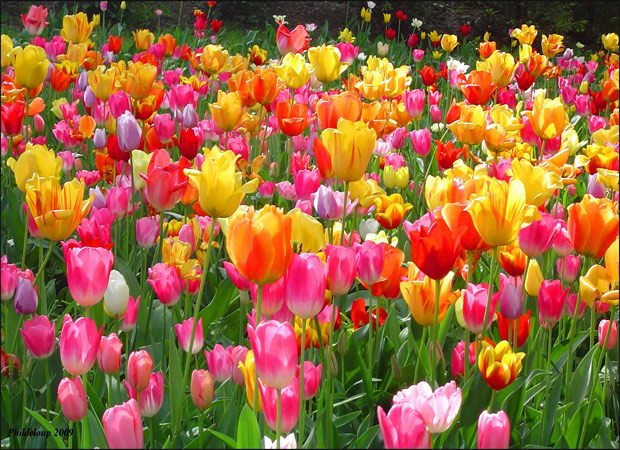TRENDING TAGS :
Exclusive !! When tulips bloom- Article by Anand
AT an embassy in New Delhi there was once a discussion about April and May being the months when tulips bloomed in more temperate climates and on the origin of the name of the flower. Here was what it was about.
Europeans began referring to the Turkish flower lale as tuliband after its shape reminded them of tuluban, the head-dress the Ottoman Turks wore in 1561 when tulips first came to Europe. Tuliband became tulipa in Latin, denoting the botanical name of the plant, in English as tulip (for the flower) and as turban for the head-dress. Unlike Hindi and Urdu, English has only a few words from Turkish, most of which seem to have come during the time of Suleiman the Magnificent, Ottoman king from 1520 to 1566. And, as we will see, with good reason. His empire stretched from the Balkans and the Mediterranean to North Africa, Persia and Central Asia. To Europeans of that period, Turkey meant any land under Ottoman or Islamic dominance, and suggested things that were mysterious, exotic or novel, and sinister.
The word "turkey" was originally used for the "guinea fowl" imported into Europe from Africa through Turkish territory. When the American bird, we know now as the turkey, was introduced in Britain in the mid-16th Century, it was first called turkey-cock because of its similarity with the guinea fowl, later shortened to turkey. Of course, turkey is as unknown in Turkey as dinde or d'inde, French for turkey (meaning "from India" because native Americans were and are often still called Indians), is unknown in India.
A show or a play is called a turkey when it flops like the bird which cannot fly. "Talking turkey" however, means having a straightforward and frank talk. For "cold turkey" we go back to the bird again. Withdrawing from drugs or cigarettes abruptly is said to give goose bumps, which is like the skin of a plucked turkey. The pejorative label given to an incompetent or awkward person had nothing to do with the Ottomans, but with the bird's behaviour - of panicking when it is disturbed. That seems a bit unfair, considering how the name Sultan of Turkey once struck terror in the hearts of Europeans.
Following his conquest of the Slavs in the Balkans (which included Transylvania where the legend of Dracula was born), Suleiman became the favourite bogeyman of Europe. After the Ottoman siege of Vienna, capital of the Austro-Hungarian empire, it is no wonder that Ubyr (reanimated corpse), a Turkish word for "witch," became vampir in Hungarian and vampire in English. The gem-stone and its distinctive blue-green colour turquoise, short for la pierre turqueise, old French for "Turkish stone" was introduced in the 16th Century from Turkestan, a territory that hordes of Suleiman's cavalry had captured in Central Asia. "Horde" - meaning a nomadic band or a very large, excited and often rather frightening crowd - again goes back via the Polish horda to the Turkish word "camp". It was the source of our own Urdu, having been introduced here in the 17th Century by Turkish soldiers living in army encampments in India.
Khaavyaar (the roe of sturgeon) from Turkish went through a confusing diversity of spellings during the 16th Century before establishing itself as "caviar" in English. Shakespeare, his ear forever to the ground, has the prince refer to a play in "Hamlet" which "pleased not the million, 'twas caviare to the general". The phrase meant being "of no interest to common folk" and, as Nigel Rees said, had nothing to do with giving expensive presents of caviar to unappreciative military gentlemen. Since caviar was a novel delicacy in the 16th Century, the "general" public was not expected to know or appreciate its taste.
Indigo dye from India via Turkey, and coffee from Turkey and Arabia arrived in Europe about the same time during Suleiman's reign. Indigo (from the Greek "indikos" meaning Indian substance) is now almost exclusively used to denote a particular shade of blue. The earliest spellings of coffee in English - chaoua, cauwa, kahue and cahve - had their source in the Turkish "kahev" and the Arabic "qahwah" ("a drink made from berries"). It was probably derived from Kaffa in the south Abyssynian highlands from where the coffee tree is said to originate. Incidentally, Java is a part of Indonesia now; Mukha (mocha) in south western Arabia was once the main port for coffee export.
Yogurt as yoghurd (from the Turkish "yoghurt" with a silent 'gh') was first used in English in the 1620s. It is not unlikely that this substance - seen in the West as of doubtful culinary significance - reached Europe during Suleiman's time, but remained unsung. Because of early reports on the medicinal properties of tobacco, logophiles are at loggerheads on whether it is a Caribbean word for the substance that reached Europe in 1536, or came from the Turko-Arabic tabaaq, meaning a medicinal or euphoria-causing herb.



